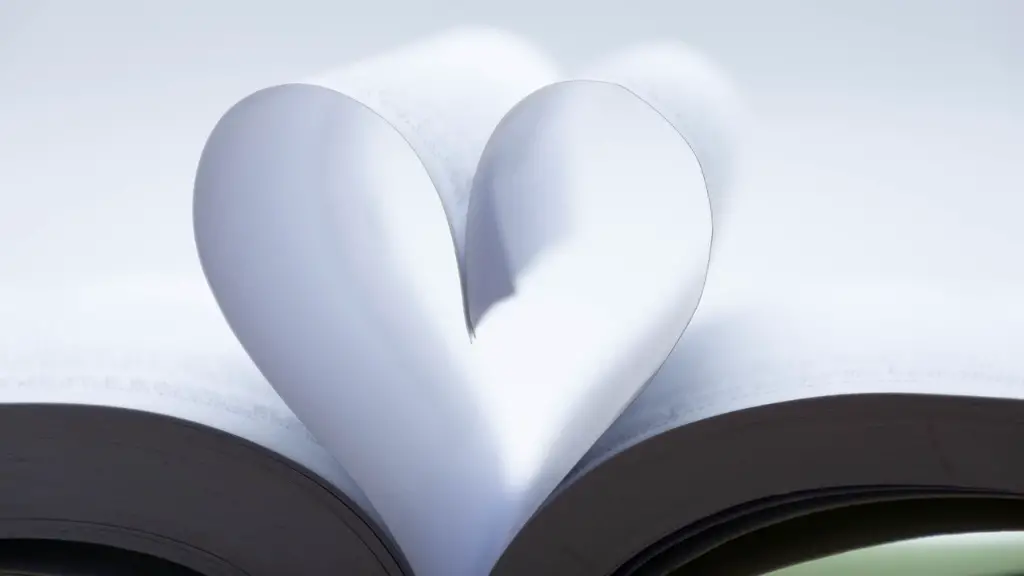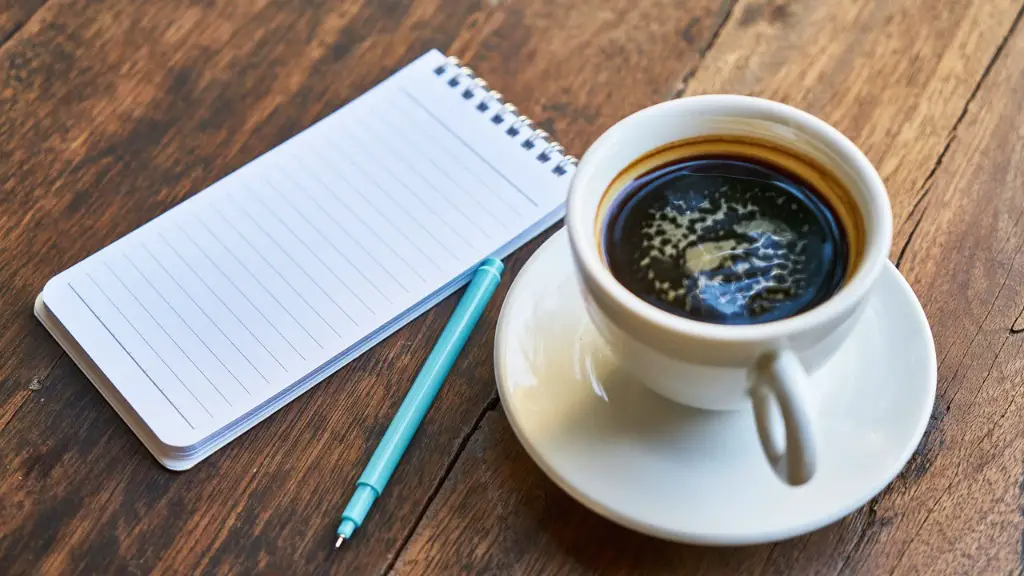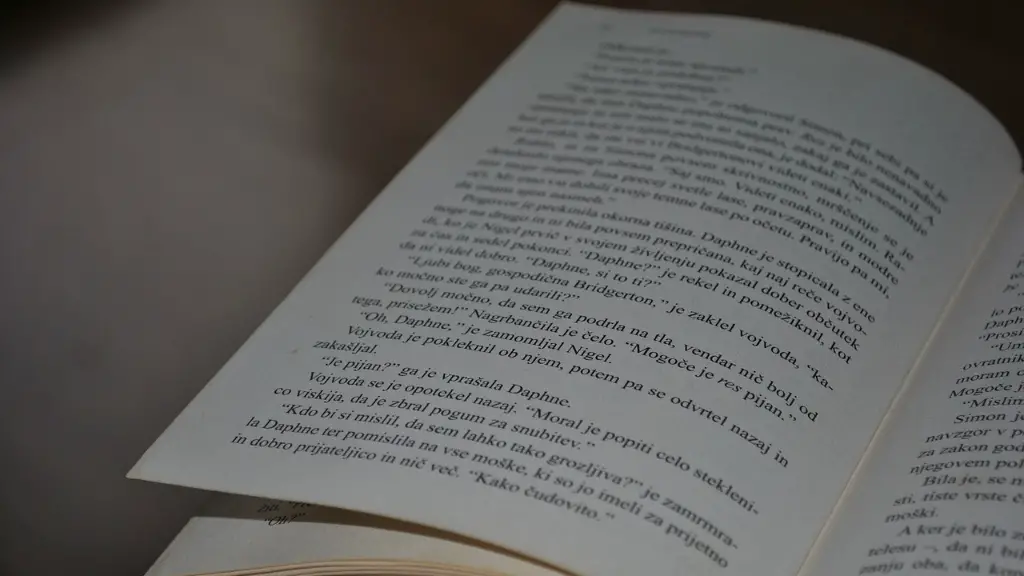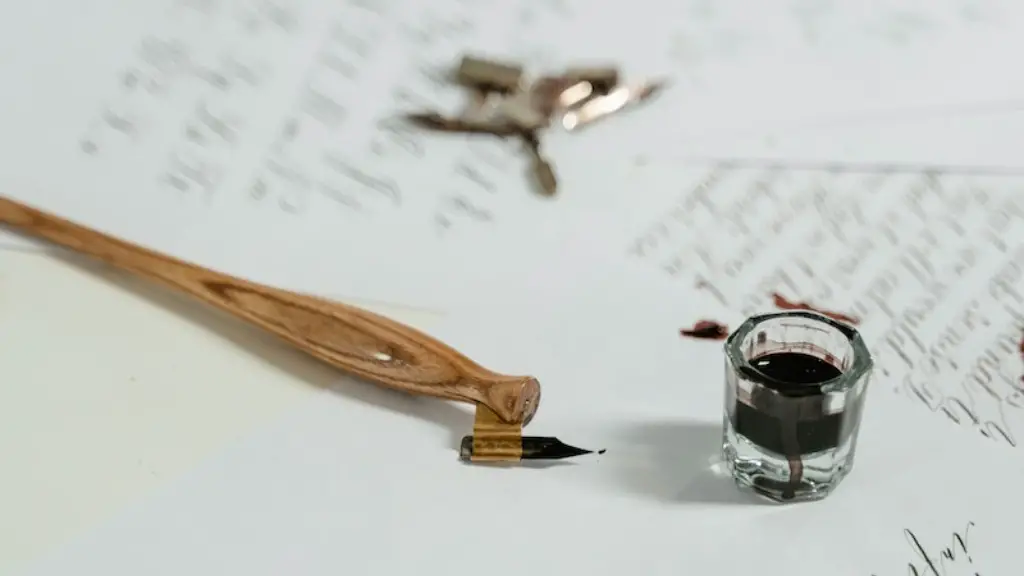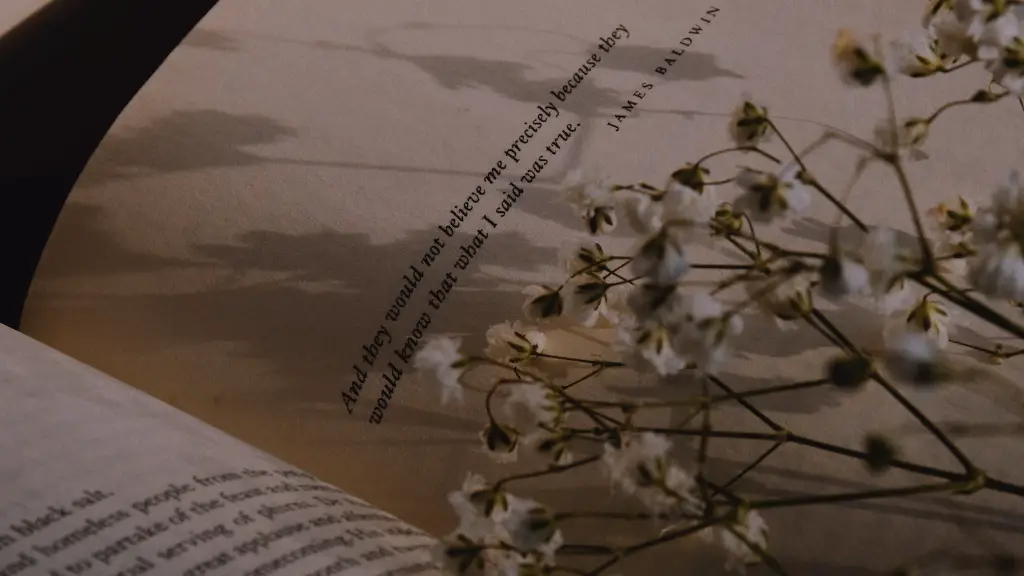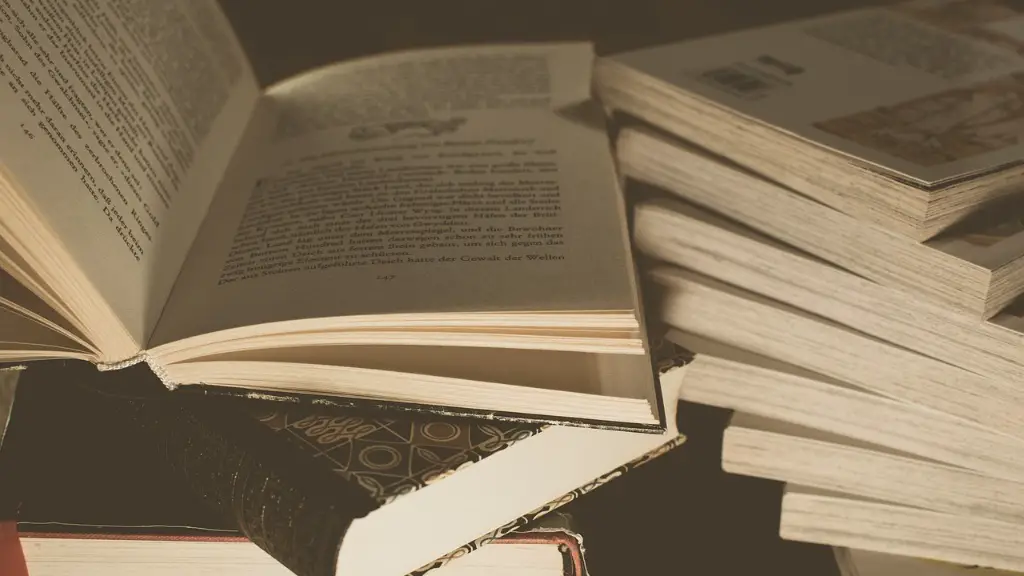Rhythm in poetry is a poetic device that gives a poem its flow and shape. It is, in essence, the repetition of certain sounds or syllables within the lines of a poem. Image the words expressed in a poem as musical notes – each of those notes creates a pattern, and that pattern makes up the poem’s rhythm. Rhythm is an essential element for poetry, as it creates a musical effect that assists in both the communication and the eloquence of the poem.
Rhythmic patterns help add shape, emotion, and interest to a poem. The most important element of rhythm is the syllable. Syllables can be divided into stressed and unstressed, and this is what creates the rhythmic pattern of a poem. The use of rhythm is an essential element that can make a poem stand out, as it creates a musical effect that emphasizes its meaning. In fact, rhythmic repetition can be used to emphasize particular words or motifs to illustrate a point or to connect ideas.
Rhythm can also be used to create a sense of regularity in long poems. This is especially common in sonnets and ballads, since they often follow a distinct rhyming pattern. To create a sense of rhythm in longer poems, poets tend to employ a wide variety of different kinds of verses. This can be a combination of short and long lines, as well as different rhythmic patterns such as anapestic, dactylic, and iambic meter.
When creating a rhythmic poem, it is important to keep in mind that the main idea should come across clearly. This means that you should not overload the reader with too many syllables and words. If you do this, the poem can become too dense and confusing. Instead, make sure that the rhythmic pattern is clear and consistent so that the reader can easily follow the poem’s logic and structure.
When writing a poem, it is essential to pay attention to the use of rhythm. This device can add beauty and meaning to a poem and help the readers connect emotionally with it. By understanding the basics of rhythm and how it works, you can create a poetic masterpiece that resonates with your audience.
Stress pattern
One element of rhythm is the stress pattern. A stress pattern is used to shape a poem and to create a sense of musicality. In poetry, there are two major types of stress pattern: strong stress and weak stress. Strong stresses are often indicated by an accented syllable, while weak stresses are left unaccented. By alternating between strong and weak stresses, a poet can create a rhythmic pattern that can help emphasize certain words or ideas within a poem.
In certain cases, poets may choose to emphasize certain words by making them stand out from the regular stress pattern. This is often done by using an extra strong stress for certain lines or words. This method can be used to create an additional level of emphasis that draws the readers’ attention to particular words or motifs.
This technique of emphasizing certain words or phrases can also be used to establish a connection between different ideas in a poem and can be used to create memorable and powerful poetic moments. It can also be employed to paint a vivid image in the brains of the readers or to convey a strong emotional message.
By understanding how a stress pattern works and how it can be used to emphasize ideas, a poet can create a rhythmically powerful poem that resonates with the readers. This is an important element to consider when writing a poem, as it can be used to help establish a connection between different topics or themes.
Rhythmic Units
Rhythmic units are another element of rhythm in poetry and are used to create a consistent and regular pattern within a poem. These units can be composed of a single syllable or a combination of several syllables, and will typically be repeated throughout the poem. The repetition of such units helps to create a sense of rhythm and a captivating musical quality that draws the reader in.
The type of rhythmic unit chosen will typically depend on the type of poem being written and the desired effect that the poet wishes to create. For example, if a poet is trying to create a sense of energy and power, they may choose to use an anapestic rhythm, which consists of two unstressed syllables followed by a single stressed syllable. On the other hand, a poet may choose to use a dactylic rhythm if they are aiming to create a calming atmosphere.
Rhythmic units are an incredibly effective tool for poets, as they can be used in a variety of different ways to enhance the overall feeling and meaning of a poem. By understanding how to use them properly, a poet can create a truly captivating piece of art that resonates with their audience.
Rhyme
Another important element of rhythm in poetry is rhyme. Rhyme is the repetition of similar or identical sounds in two or more words. It is often used to create a harmonious effect and to emphasize certain words or ideas. When used properly, rhyme can give a poem an additional level of beauty and richness that can help it stand out and make it more memorable to the reader.
There are a variety of different kinds of rhyme that can be used in poems. End rhyme is a common rhyming method which is used to connect the last words of two lines. Internal rhyme, on the other hand, is used to connect words within the same line. Both of these approaches can be used to create unique rhythmic effects and to emphasize certain ideas.
Rhyme can also be used to create a sense of consistency and structure within a poem. This can be achieved by using end rhyme, where the last words of each line rhyme. This helps to give a structured and ordered feel to the poem, which can be very helpful in conveying a particular idea or emotion.
By intelligently using rhyme within a poem, a poet can create an additional level of musicality and emotion. This can help to draw the readers in and can make the poem stand out from the rest.
Rhythm and meter
Rhythm and meter are also important elements of rhythm in poetry. In poetry, meter is the process of measuring out syllables and creating a regular pattern of stressed and unstressed syllables. This pattern can help to create a sense of order and structure within the poem, and is an essential part of creating a beautiful and captivating poem.
Meter is usually measured in beats or bars, and poets tend to follow a specific number of beats or bars in a given line. Common meters that are used in poetry include iambic pentameter, which consists of five units of unstressed and then stressed syllables, and trochaic tetrameter, which consists of four units of stressed and then unstressed syllables. By understanding the different types of meter, poets can create a poem that has a pleasing and consistent rhythm.
In addition to creating a sense of order and structure, meter can also be used to emphasize certain words or ideas. By using certain types of meter that stress certain words, a poet can draw the reader’s attention to certain symbols or ideas and create a more powerful overall effect.
By understanding the elements of rhythm and the various tools that poets use to create a rhythmically pleasing poem, poets can create unique and captivating works that resonate with their audience.
Oral verses and story-telling
Rhythm can also be used to create a sense of oral tradition and story-telling. This can be achieved by emulating the rhythms or cadence of traditional poems and stories. This is commonly seen in oral poems, such as nursery rhymes, which often employ a regular and repeated pattern of rhythm that makes them easier to remember and recite.
By imitating the rhythm of traditional stories and poems, a poet can create the illusion of an ancient and timeless tradition. This can be employed to create a sense of connection between the reader, the poet, and the poem’s themes. By understanding the power of oral tradition, a poet can create a captivating and powerful poem that resonates with their audience.
The use of rhythm can also be used to help connect different parts of a poem. By using similar rhythm in various parts of the poem, a poet can create transitions that take the reader from one section to the next in an effortless and natural manner.
By understanding the power of rhythm and how it can be used to create a sense of connection and a captivating musical effect, a poet can create a poem that resonates with the reader and stands out from the rest.
The power of rhythm
Rhythm is an incredibly powerful tool for poets, as it can be used to create a captivating musicality and emotional effect. Through understanding the various elements of rhythm, such as the use of rhyme, stress patterns, rhythmic units, and meter, a poet can create a unique and captivating poem that is sure to resonate with their audience.
In addition to its musical qualities, rhythm can also be used to emphasize certain words or themes, to create a sense of structure and consistency, or to imitate traditional oral stories and poems. By understanding the power of rhythm, a poet can create a truly captivating and powerful poem.
